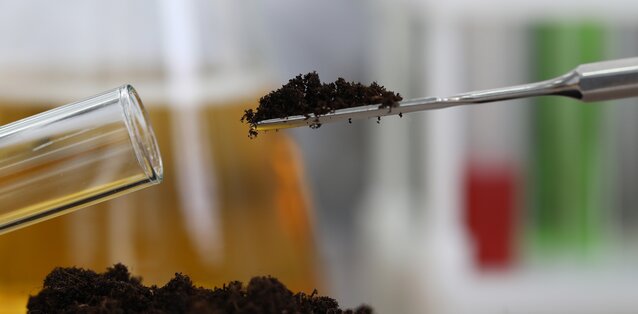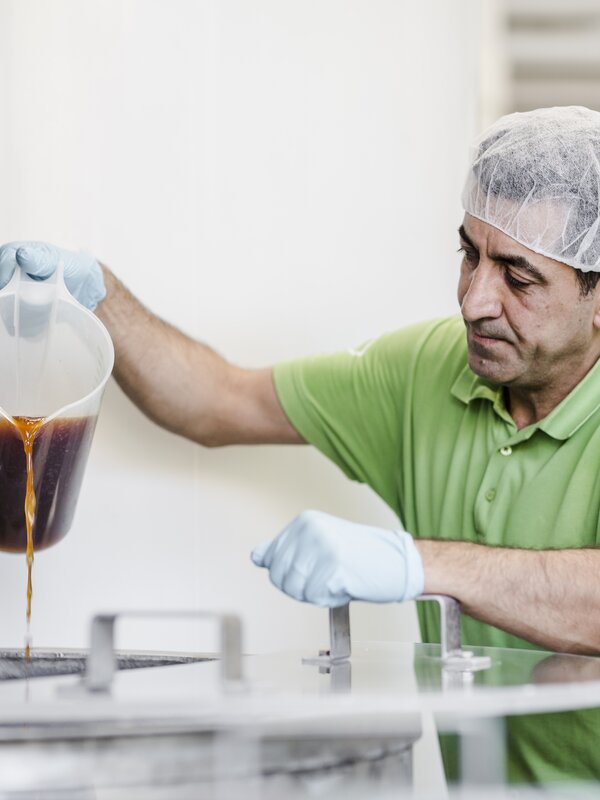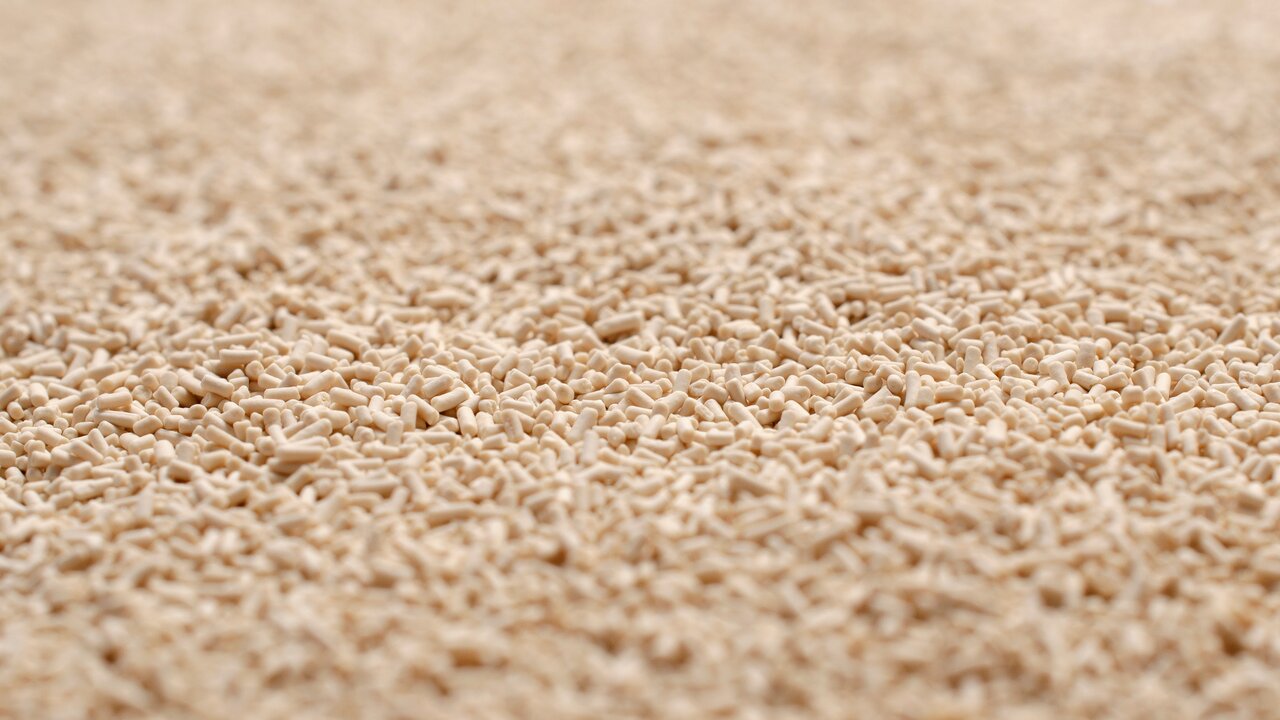

The effect of Effective Microorganisms (EM)
The main characteristic of Effective Microorganisms
Multikraft products based on Effective Microorganisms, which have been used in practice for over 20 years and have been continuously further developed, have the main task of preventing putrefaction and the resulting toxic metabolic end products and promoting regenerative processes.
Multikraft products based on Effective Microorganisms, which have been used in practice for over 20 years and have been continuously further developed, have the main task of preventing putrefaction and the resulting toxic metabolic end products and promoting regenerative processes.
Briefly explained: How effective microorganisms work
Effective microorganisms (EM) promote beneficial microbes and suppress undesirable ones, thus supporting the ecological balance and counteracting the spread of harmful microorganisms. They contribute to the health of the environment by allowing beneficial microbes to dominate and reducing putrefaction processes.

Fermentation - the basis of our products
Fermentation is a biotechnological process that describes the degradation and conversion of organic substances with the help of bacteria, fungi or cell cultures.
People have been using fermentation processes for thousands of years, primarily to preserve and refine food: Bread, dairy products such as cheese or yoghurt, but also the production of alcohol or sauerkraut would not be possible without fermentation using bacterial or fungal cultures.
In biotechnology, not only anaerobic but also aerobic metabolic processes are referred to as fermentation. Many organic acids (lactic, amino and fatty acids) as well as solvents such as acetone, washing enzymes and vitamins are produced by fermentation.
Fermentation processes form the basis of our product development. This natural method involves processing various raw materials such as sugar cane molasses, herbs and plant extracts. This process leads to the formation of enzymes, vitamins and antioxidants in our Multikraft products. These valuable ingredients stimulate regenerative processes and thus support the health of plants, animals and humans. They also contribute to a positive environmental impact.
The antioxidant principle
In contrast to oxidation, which can lead to an increase in free radicals that are harmful to the respective environment, antioxidation prevents the combination of substances with oxygen by donating electrons and even reverses this process.
Effective microorganisms produce antioxidants in large quantities. These consist primarily of polysaccharides, chelated minerals with catalytic activity, and small amounts of vitamins C and E as well as trace elements.
Effective Microorganisms can be summarised under the regenerative type. They can directly and indirectly prevent decay in all substances and thus keep living things and the environment healthy.
The degenerative type of microorganism behaves in exactly the opposite way to the regenerative type.
The neutral microorganisms form the largest group and follow the so-called dominance principle of the group that is predominant in a system.
So if we create an environment in which regenerative microorganisms predominate, the neutral microorganisms follow the build-up process and degradative or putrefactive processes are prevented. The use of Effective Microorganisms therefore opens up completely new dimensions in many areas of life.
The composition of Effective Microorganisms
Effective Microorganisms are mixed cultures of microbes consisting primarily of lactic acid bacteria, yeasts and photosynthesis bacteria. Many of the microorganisms in these cultures are used to produce and extend the shelf life of foods and are beneficial for plants, people, animals and the environment.
Lactic acid bacteria
Under anaerobic conditions, lactic acid bacteria promote the rapid decomposition of organic material and produce lactic acid in fermentation processes. This has a preserving effect. It creates an environment where pathogens cannot develop and also forms enzymes and other valuable substances such as antioxidants and vitamins. These have a positive effect on the health of plants, animals and people.
Yeasts
Yeasts are single-celled fungi that are able to perform two different types of metabolic processes: fermentation and respiration. In the presence of oxygen, carbon compounds are broken down and carbon dioxide is produced, whereas in anaerobic conditions, carbohydrates are fermented to form alcohol. Yeasts have been used by people for millennia to make bread and alcohol. In Effective Microorganisms, they maintain the balance of the mixed culture of microbes and form an important supply of energy for other microorganisms.
Effective Microorganisms are mixed cultures of microbes consisting primarily of lactic acid bacteria, yeasts and photosynthesis bacteria. Many of the microorganisms in these cultures are used to produce and extend the shelf life of foods and are beneficial for plants, people, animals and the environment.
Lactic acid bacteria
Under anaerobic conditions, lactic acid bacteria promote the rapid decomposition of organic material and produce lactic acid in fermentation processes. This has a preserving effect. It creates an environment where pathogens cannot develop and also forms enzymes and other valuable substances such as antioxidants and vitamins. These have a positive effect on the health of plants, animals and people.
Yeasts
Yeasts are single-celled fungi that are able to perform two different types of metabolic processes: fermentation and respiration. In the presence of oxygen, carbon compounds are broken down and carbon dioxide is produced, whereas in anaerobic conditions, carbohydrates are fermented to form alcohol. Yeasts have been used by people for millennia to make bread and alcohol. In Effective Microorganisms, they maintain the balance of the mixed culture of microbes and form an important supply of energy for other microorganisms.
Photosynthesis bacteria
Photosynthesis bacteria are among the earliest organisms to colonise the Earth. They come from an era in the Earth’s history when conditions were hostile to life. At the time, the atmosphere contained ammonia, hydrogen sulphide and other harmful compounds. In order to survive, the bacteria developed the ability to neutralise toxins with the help of enzymes and to break down the metabolites from rotting processes and convert them into regenerative substances.
The interaction of all the cultures in Effective Microorganisms allows degenerative processes such as rotting to be transformed into positive, constructive and life-enhancing processes.

